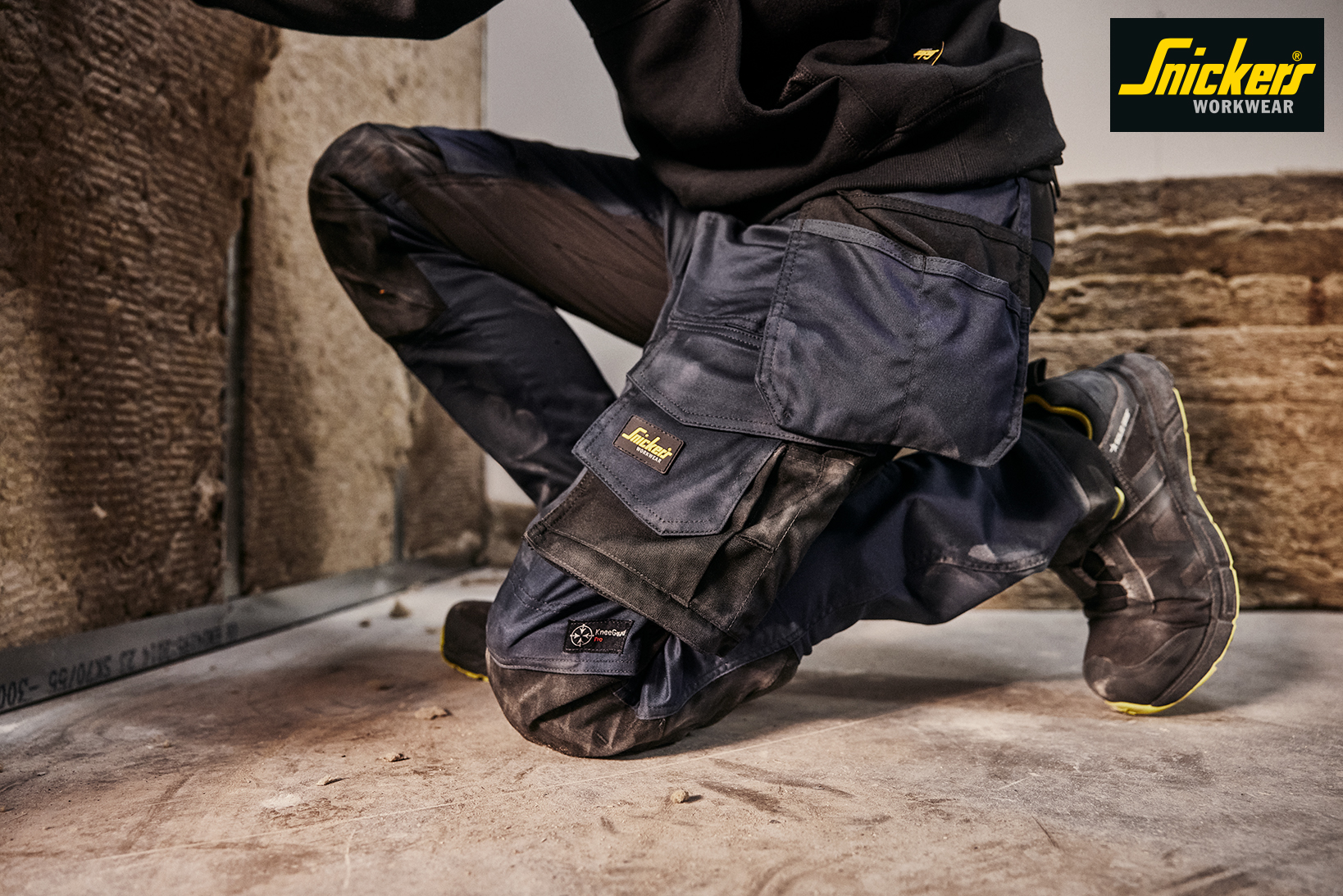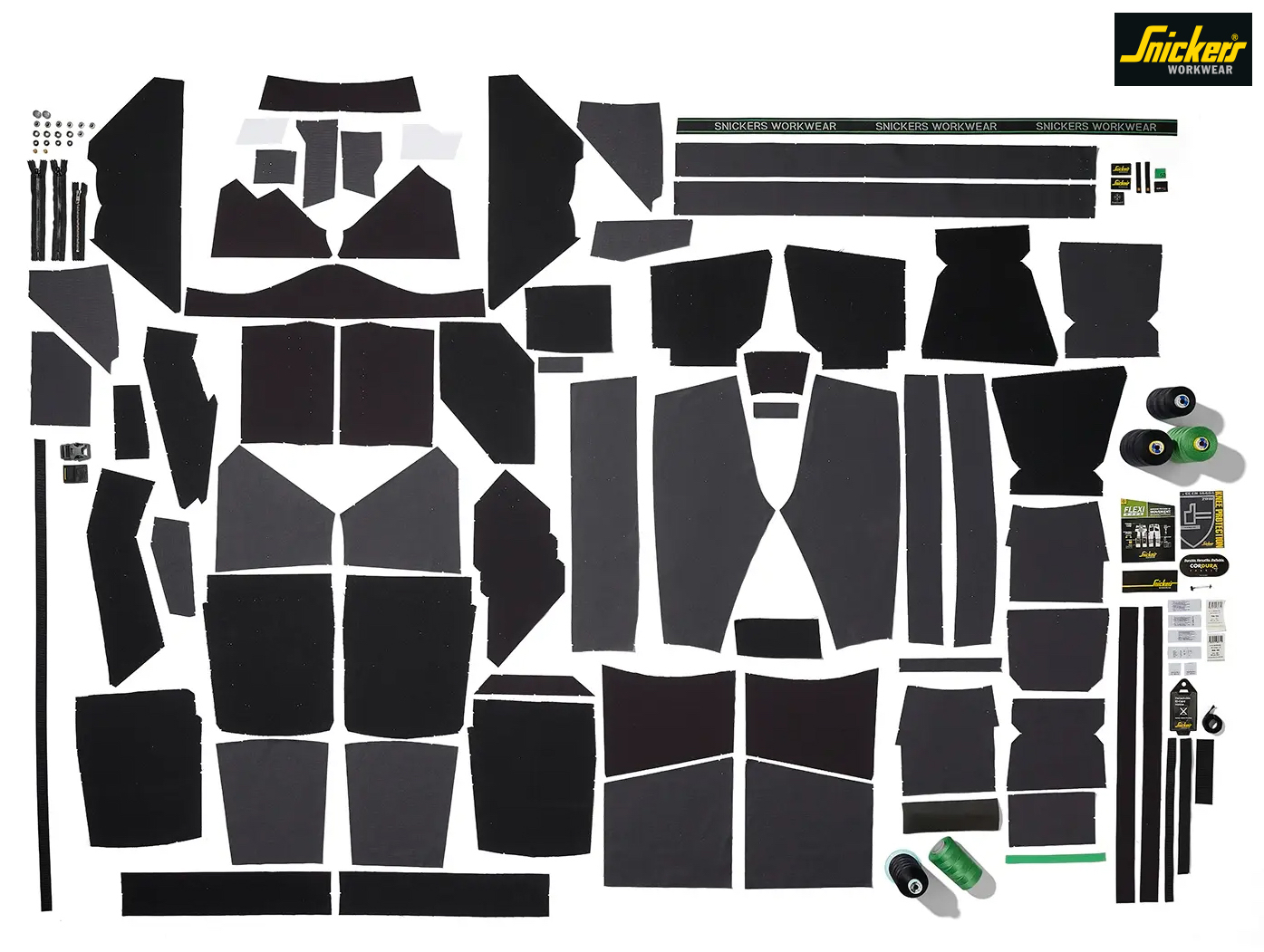
Ben Stacey, Snickers Workwear Product Specialist writes:
With the global economy producing over a 100 billion garments a year,[1] it’s little wonder the clothing industry has had such a debilitating effect on the environment for so long. Experts estimate that the industry’s climate impact ranges from 4% to 10% of overall global carbon emissions,[2] so there’s no getting away from the fact that it has been a major contributor to climate change and biodiversity loss through production processes and the use of fossil-based synthetics. That’s why the sustainability efforts of clothing manufacturers and their supply chains are crucial to our planet’s wellbeing.
While consumers are increasingly demanding an emphasis on sustainability from fashion brands, short-life throwaway clothing is very much under the environmental spotlight. The retail clothing industry is becoming increasingly immersed in the effects on our climate through the actions of high-intensity fashion buyers and the leading workwear manufacturers are also focussing on the problems caused by poor quality, eco-unfriendly workwear. Poor quality fabrics produce a short lifecycle with these garments heading for landfill rather than being part of the drive towards circular business models and climate-friendly user satisfaction.
Mintel’s report on the Sustainable Fashion Market Outlook has observed that the cost of living crisis has played a part in helping consumers adopt more sustainable buying choices. Inflationary pressures have led people to buy fewer clothing items, shopping less frequently as well as choosing more durable, better quality pieces. As a result, 52% of consumers claim that rising prices have made them more aware of sustainable clothing,[3] while sales of pre-loved clothing in charity outlets and through online retailers are increasing.
When it comes to workwear however, pre-loved Jackets and Work Trousers are not always an option, thus well-informed, sustainable buying choices by individuals and businesses alike are increasingly important.
What is sustainable clothing? In short, it’s a catch-all term for clothes that are manufactured in a way that can be ‘sustained’. That is, by using processes which safeguard not only the environment but also those people that work in the manufacturing industries. Says British Vogue, ‘That’s why cutting CO2 emissions, addressing overproduction, reducing pollution and waste, supporting biodiversity, and ensuring that garment workers are paid a fair wage and have safe working conditions, are all crucial to the sustainability matrix’.[4]
‘Buy less and buy better’ are its watchwords. Which is why Eco-Age’s chief strategy officer Harriet Vocking advises that before making a purchase, you ask yourself three all-important questions: ‘What are you buying and why? What do you really need? Will you wear it at least 30 times?’[5]
Multiple use workwear pieces should therefore rely on durable good quality fabrics to ensure a sustainable lifecycle. While durability has always been part of the Snickers Workwear DNA, refinements in its fabric technologies are now at the heart of the brand’s sustainability philosophy. In essence, the brand believes that the longer Snickers Workwear clothing lasts, the less environmental impact it has.
This fundamental insight has become the cornerstone of the brand’s sustainability efforts to uphold both social and environmental accountability,[6] while the less durable, poorer quality clothing peddled by other brands in the name of ‘value’ continues to contribute to our climate issues.
Committed to the UN Paris Agreement,[7] Snickers Workwear’s sustainability planning is focussed on continuous improvement in two key areas – Materials Technology; Standards and Targets
The brand makes no apologies for using the highest quality materials in ensuring its clothing lasts as long as possible. Its policy is to replace conventional fabrics with better and more sustainable alternatives to reduce its environmental footprint. The brand is replacing conventional materials with more sustainable alternatives such as Preferred Fibres [8] like REPREVE® and SORONA®.[9] As well as recycling man-made nylon and polyester fabrics to create new Preferred Fibres as well as supporting the ‘Better Cotton initiative’ to improve cotton farming globally.[10]
Snickers Workwear is committed to sourcing 40% of all garment fibres as Preferred Fibres by 2023, and as much as 70% by 2030. Business decision making is based on established methods and standards, calculating company emissions using the Greenhouse Gas (GHG) Protocol,[11] while ongoing Life Cycle Assessments on every product help identify areas of improvement.
As part of the Hultafors Group, corporate climate targets have been set in line with the 1.5°C pathway of the Paris Agreement and high standards have been implemented for the brand’s supply chain to ensure that every single item of Snickers Workwear clothing is produced responsibly. Partners and suppliers are carefully selected, and each must have processes in place for environmental due diligence and transparency.
Suppliers are required to adhere to the group’s Code of Conduct (CoC).[12] It’s based on accepted international standards to ensure fair, safe, and healthy working conditions, as well as maintaining eco responsibility responsibility across its entire business network. It therefore fosters cooperation with a single purpose in a rapidly changing environmental landscape - gaining new insights, sharing learnings, and encouraging the industry as a whole to commit to the pathway of the Paris Agreement to creating positive energy in sustaining a better world for all.
[1] British Vogue, 16 Things everyone should know about sustainable fashion,
https://www.vogue.co.uk/fashion/article/sustainable-fashion ,(Accessed 21st February 2024).
[2] Kenneth P Pucker, The Myth of Sustainable Fashion, https://hbr.org/2022/01/the-myth-of-sustainable-fashion , (Accessed 21st February 2024).
[3] Mintel, UK Fashion and UK market Sustainability Report,
https://store.mintel.com/report/uk-fashion-sustainability-market-report , (Accessed 21st February 2024).
[4] British Vogue, 16 Things everyone should know about sustainable fashion,
https://www.vogue.co.uk/fashion/article/sustainable-fashion , (Accessed 21st February 2024).
[5] British Vogue, 16 Things everyone should know about sustainable fashion,
https://www.vogue.co.uk/fashion/article/sustainable-fashion , (Accessed 21st February 2024).
[6] Snickers Workwear, Durability means sustainability, https://www.snickersworkwear.co.uk/list/sustainability , (Accessed 18th February 2024).
[7] The Paris Agreement is a legally binding international treaty on climate change. It was adopted by 196 Parties at the UN Climate Change Conference (COP21). United Nations Climate Change, The Paris Agreement, https://unfccc.int/process-and-meetings/the-paris-agreement, (Accessed 15th February 2024).
[8] * A ‘Preferred fibre’ is defined as fibres with documented improved environmental and/or social sustainability outcomes and impacts compared to conventional production. https://repreve.com , https://sorona.com .
[9] Hultafors Group, Sustainability Report 2022, https://www.datocms-assets.com/57215/1686653467-hultafors-group-sustainability-report-2022.pdf, 42.
[10] Better Cotton, 2030 Strategy, https://bettercotton.org/who-we-are/our-aims-strategy/2030-strategy/ , (Accessed 20th February 2024).
[11] Greenhouse Gas Protocol, https://ghgprotocol.org , (Accessed 19th February 2024).
[12] Hultafors Group, Policies and Certifications – Code of Conduct, https://www.datocms-assets.com/35515/1616419392-hultafors-group-code-of-conduct2021.pdf , (Accessed 19th February 2024).
The DNA of Sustainable Snickers Workwear Work Trousers
Margarita Kleinhofa, Senior Product Developer at Snickers Workwear outlines how one of its most iconic products – the FlexiWork Work Trousers – are made for long-lasting durability.
The physical makeup of sustainable Work Trousers benefits from processes of continuous improvement at Snickers Workwear with a focus on fabric durability to ensure it is maximising product performance, user satisfaction and a sustainable product lifecycle.
In just one pair of long-lasting FlexiWork Trousers there are 64 individual pieces of fabric from 6 different types, plus 46 additional components like buttons, buckles and labels. It’s a complex process combining it all through 184 production steps over 122 production minutes with 59.19 meters of cutting perimeter and 40 000 stitches.[1]
64 pieces of fabric in one pair of trousers, why so many?
The human body is complex and to be able to offer the wearer maximum comfort and mobility, we need to construct a shape that follows the body’s contours, whatever an individual’s size. We also want to maximize the ergonomics and durability of the trousers to ensure longevity. If you want them to last, it’s important to wear the right size and style that fits your body shape. A pair of properly fitting trousers will work with you, following your every move, no matter your working position.

What about the choice of fabric, thread and seams?
In building a pair of Work Trousers, fabric has a major impact on product performance and lifecycle as well as comfort and durability. We always consider several options of fabrics and test them both individually and in combination before starting the production process. The fabrics we choose influences the choice of thread use and we also have specifications for every seam in every garment, as well as rules for stitching to ensure the Trousers last.
So, what’s “the secret” behind a good pair of sustainable Work Trousers?
It’s so much more than simply sewing pieces of fabric together. 50 years’ experience of positive energy in workwear development drives us to embrace sustainability. It brings together the best in market-leading design capabilities with a clear understanding of how new fabric technologies and sustainable raw materials can be combined to produce durable, ergonomic Work Trousers tailored suit every working environment and weather condition.
Check out the video at https://www.snickersworkwear.com/list/stories/how-sww-trousers-are-made
[1] Snickers Workwear, How Snickers Workwear Trousers are made, https://www.snickersworkwear.com/list/stories/how-sww-trousers-are-made , (Accessed 15th February 2024).
